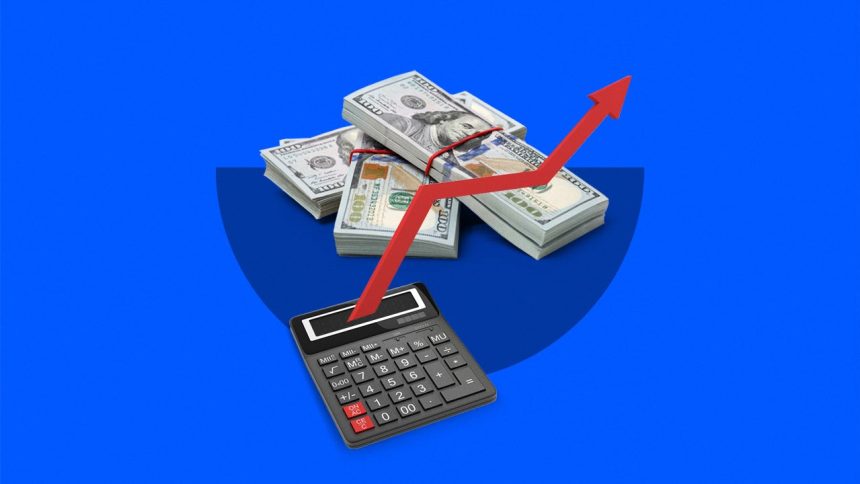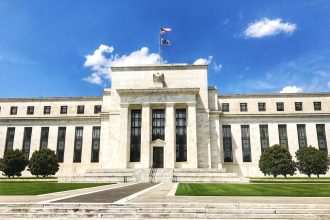Images by Getty Images; Illustration by Issiah Davis/Bankrate
Many savers are turning to one-year certificates of deposit (CDs) right now, and for good reason. They often pay competitive yields on money that will be freed up again relatively soon — making one-year CDs a good place to earn interest on funds you’ll need for short-term financial goals.
In fact, it’s possible to find top-yielding one-year CDs these days that are out-earning some high-yield savings accounts. Having access to your principal and the interest in just 12 months gives you the freedom to make a planned purchase or to reinvest the money at that time.
Not all CDs are created equal, however, and this is often most evident when it comes to the annual percentage yield (APY). Here we’ll look at three scenarios in which $25,000 is deposited in one-year CDs earning very different yields and how much money each would be worth upon maturity. For these example CDs, one earns the national average rate, another earns a highly competitive yield and another earns a rock-bottom rate typically paid by big brick-and-mortar banks.
| Type of 1-year CD | Typical APY | Interest on $25,000 after 1 year | Total value of CD with $25,000 opening deposit after 1 year |
|---|---|---|---|
| CDs that pay competitive rates | 5.20% | $1,300 | $26,300 |
| CDs that pay the national average | 1.74% | $435 | $25,435 |
| CDs from big brick-and-mortar banks | 0.03% | $7.50 | $25,007.50 |
National average 1-year CD rates
The national average APY earned on a one-year CD is currently 1.74 percent. Overall, this average hasn’t decreased for the past several years, according to Bankrate research.
If you deposited $25,000 into a one-year CD that earns an APY of 1.74 percent, it would earn around $435 in total interest, making your CD worth a grand total of around $25,435 upon maturity. This is shown in the following breakdown:
- Type of account: 1-year CD
- Opening deposit: $25,000
- APY: 1.74%
- Total interest after 1 year: around $435
- Total value of CD after 1 year: around $25,435
You can use Bankrate’s CD calculator to determine how much a CD will be worth at maturity. Just enter the CD’s term, the APY and your deposit amount.
Competitive 1-year CD rates
You can earn nearly three times the national average APY by going with a CD that pays a highly competitive rate. For instance, depositing $25,000 into a one-year CD that earns a 5.20 percent APY will leave you with a grand total of around $26,300 when the CD matures. This includes around $1,300 in interest and is broken down as follows:
- Type of account: 1-year CD
- Opening deposit: $25,000
- APY: 5.20%
- Total interest after 1 year: around $1,300
- Total value of CD after 1 year: around $26,300
Choosing a one-year CD that earns 5.20 percent APY will earn you around $865 more in total interest than going with a CD that earns the national average APY of just 1.74 percent.
The best CD rates are often found at online banks, which don’t have the overhead expenses of maintaining branches and may pass the savings on to customers. What’s more, these banks may offer highly competitive rates in order to draw customers from larger banks.
1-year CD rates from big banks
Large brick-and-mortar banks typically don’t offer high rates on their CDs and savings accounts. For example, one-year CDs offered by Bank of America and U.S. Bank earn just 0.03 percent APY and 0.05 percent APY, respectively. Chase, however, offers a standard CD of 0.01 percent APY, but also offers a higher “relationship rate” to existing bank customers of 2.00 percent APY.
Depositing $25,000 in a one-year CD that earns an APY of 0.03 percent will earn you only around $7.50 in interest by the time the CD matures.
- Type of account: 1-year CD
- Opening deposit: $25,000
- APY: 0.03%
- Total interest after 1 year: around $7.50
- Total value of CD after 1 year: around $25,007.50
Who should get a 1-year CD?
A one-year CD can be a good option for anyone who prefers a guaranteed rate of return and won’t need access to their funds in less than one year’s time. For example, if you plan to purchase a car or put a down payment on a house in a year, a one-year CD could be a safe place to earn some interest on your funds. What’s more, you’ll be able to calculate just how much the CD will be worth at maturity since most CDs have a fixed rate.
Before locking your funds into a CD, it’s important to be sure you won’t need access to the money before the CD’s term is up. Otherwise, you’ll likely be subjected to an early withdrawal penalty, in which case you lose some interest and possibly even some of your principal. For this reason, a liquid savings account is often a better place to set aside funds for emergencies or other expenses you may encounter in the coming weeks or months.
Is now a good time to get a one-year CD?
Yields on competitive CDs tend to move in lockstep with changes the Federal Reserve makes to its key benchmark rate. The Fed has held rates steady since July 2023, and market watchers expect it will lower rates in coming months. However, persistent inflation could continue to delay rate cuts.
The top APYs on CDs have dipped recently, with the highest yield available on a one-year CD down by 0.39 percent APY since December 2023. However, many CDs are still available with yields higher than we’ve seen in more than a decade — outside of the current rate cycle.
Locking in a high yield on a CD now could benefit you over time if yields continue to decrease on new CDs. This is because most CDs earn a fixed yield that remains the same throughout their entire term.
Considerations for 1-year CDs
Whether a one-year CD is right for you depends on your personal financial situation and goals. If you’re wondering whether a one-year CD is worth your while, some factors to consider include:
- Guaranteed rate: A CD’s guaranteed rate allows you to calculate how much it will be worth, including principal and interest, when it matures.
- Access to your funds: A one-year CD doesn’t tie up your funds too long, so you’ll have access to the money relatively soon to reinvest it or make planned purchases.
- Deposit insurance: Money in a CD is protected, within limits and guidelines, when it’s with a bank insured by the Federal Deposit Insurance Corp. (FDIC) or a credit union insured by the National Credit Union Administration (NCUA).
- Early withdrawal penalty: If you need access to your funds in a one-year CD in less than a year’s time, you’ll likely be subjected to an early withdrawal penalty.
- Higher returns elsewhere: It’s possible to earn a better return by investing elsewhere (although you could end up losing money in certain other investments that don’t have fixed returns).
Bottom line
The benefits of a one-year CD can be significant for savers who find one that earns a highly competitive APY and who don’t need access to the funds for at least 12 months. It’s worth your while to shop around for the best rate. Finding a high-yield CD means you’ll receive a much higher payout when it matures than if you were to choose a CD paying the national average yield or one from a CD from a bank earning rock-bottom rates.
Read the full article here
















